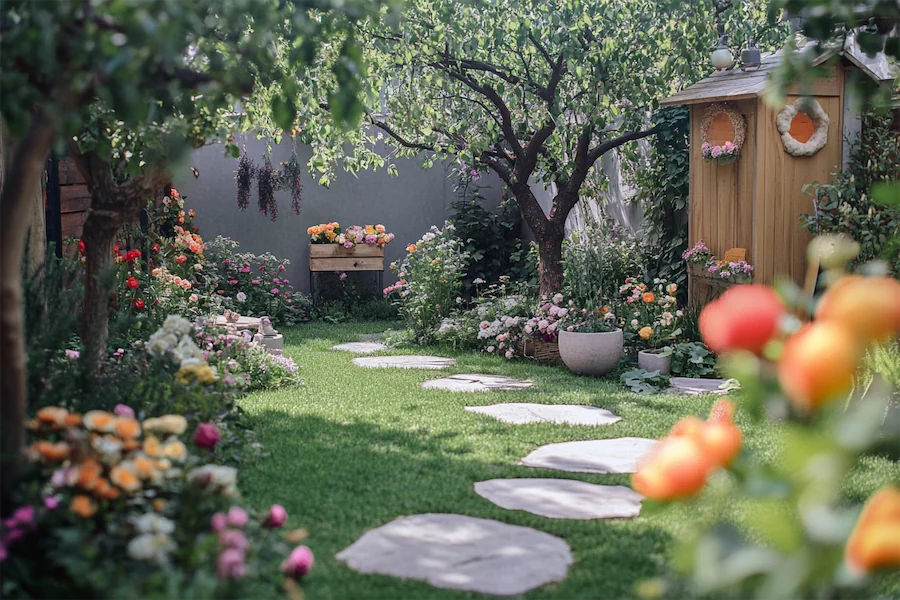An orchard garden is a thoughtfully planned space dedicated to cultivating fruit-bearing trees and plants, harmoniously blending aesthetics with functionality. Such gardens not only provide a bountiful harvest but also enhance the landscape’s beauty and support local ecosystems.
Key Features of Orchard Gardens
Orchard gardens are characterized by several distinctive features:
- Strategic Layout: Careful planning of tree placement ensures optimal sunlight exposure, air circulation, and efficient use of space. Implementing designs like hexagonal patterns or rectangular arrangements with central open areas can enhance both productivity and visual appeal.
- Soil Preparation and Drainage: Assessing soil type and drainage capacity is crucial. Amending soils prone to waterlogging with organic matter and installing proper drainage systems prevent muddy conditions and promote healthy root development.
- Diverse Plant Selection: Incorporating a variety of fruit trees suited to the local climate, along with companion plants like herbs and flowers, fosters biodiversity, aids in pest management, and enhances pollination.
Benefits of Orchard Gardens
Establishing an orchard garden offers numerous advantages:
- Sustainable Food Production: Growing your own fruit reduces reliance on commercial produce, promoting self-sufficiency and ensuring access to fresh, organic options.
- Environmental Support: Orchard gardens provide habitats for wildlife, support pollinators, and contribute to a balanced ecosystem.
- Aesthetic and Recreational Value: Beyond their productive capacity, orchard gardens offer serene spaces for relaxation, recreation, and connection with nature.
Considerations When Designing an Orchard Garden
When planning an orchard garden, consider the following:
- Site Assessment: Evaluate factors such as soil quality, sunlight exposure, and wind patterns to determine the most suitable location for your orchard.
- Tree Selection: Choose fruit tree varieties that are well-adapted to your region’s climate and resistant to local pests and diseases. Researching rootstocks and cultivars will help in selecting trees that meet your specific needs.
- Maintenance Planning: Consider the long-term care requirements, including pruning, watering, and pest management, to ensure the orchard’s health and productivity. Implementing permaculture principles can reduce maintenance efforts and enhance sustainability.
Conclusion
An orchard garden is a harmonious blend of beauty and utility, offering a sustainable source of fresh fruit while enriching the landscape. By thoughtfully considering design elements, plant selection, and maintenance practices, you can create a thriving orchard that provides nourishment and enjoyment for years to come.
